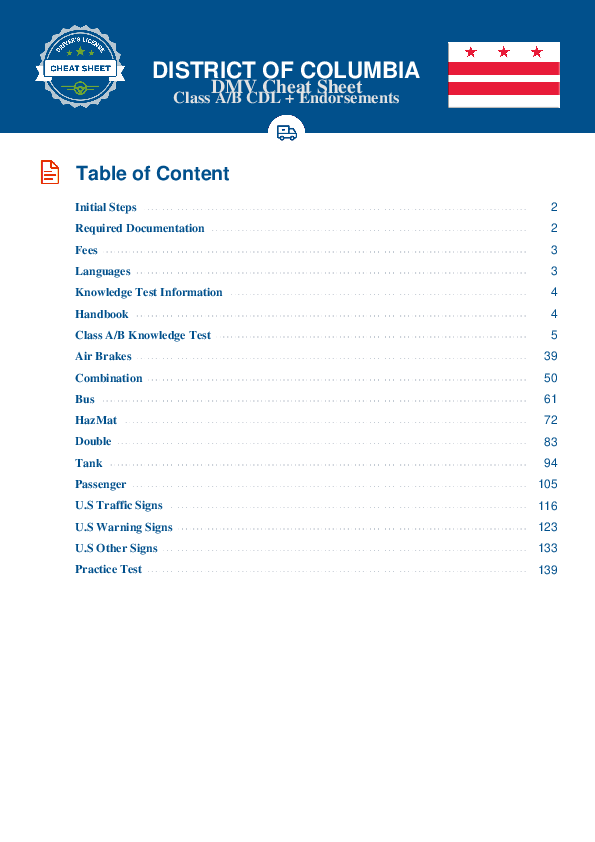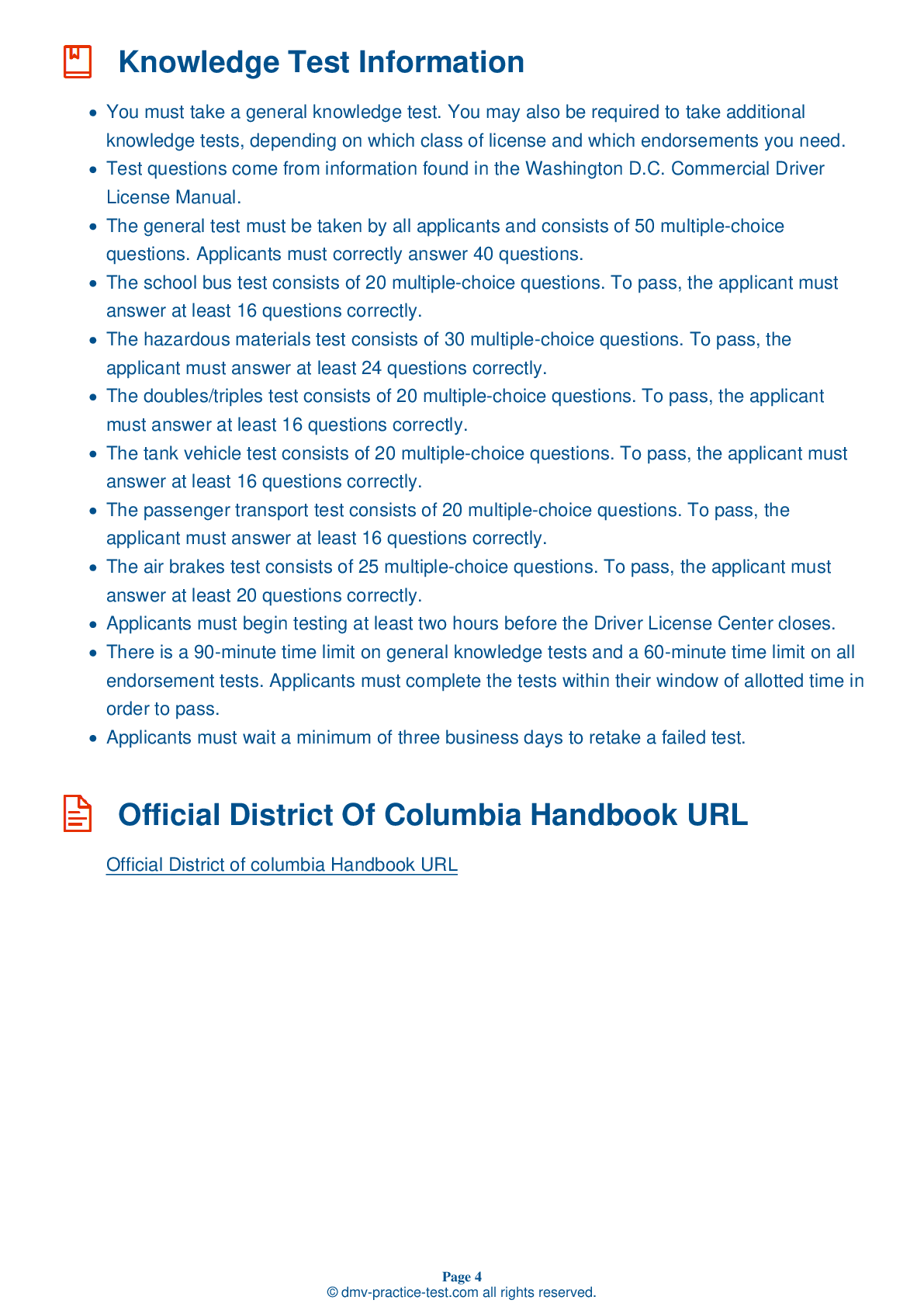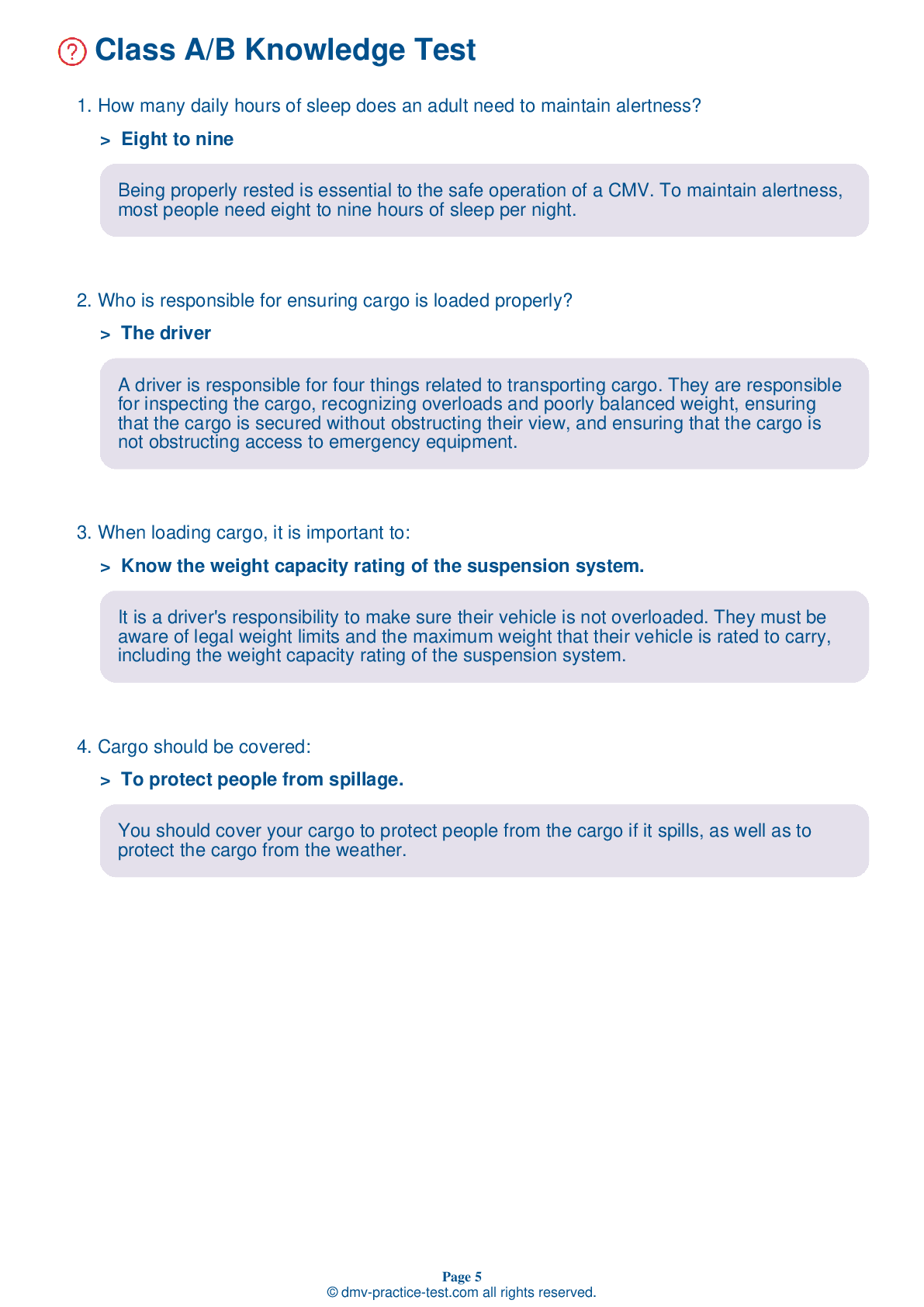Class B Driving Test | District Of Columbia 2025 #2 Page 2 of 7
Train for FREE online with our District Of Columbia class B license test. The official exam test consists of several obligatory parts, with all of them checking your knowledge of different blocks of road rules. If you need to obtain a DC CDL class B permit in 2025, practice as much as possible. Free sample tests published on our website will help you check and improve your knowledge and boost your grades. Please bear in mind that CDL class B requirements may vary from state to state.
8 . Which of the following is not a problem?
When inspecting an exhaust system, you should verify that parts of the system are not loose, broken, or missing. The system's parts must be properly mounted and should not be rubbing against moving parts of the vehicle.
9 . Which of the following is not an example of a driving hazard?
Passing an accident scene can be hazardous because the people involved in the accident may not be watching traffic, and the scene itself may distract other passing drivers. Ice cream trucks can create hazardous conditions because they attract children who may not pay attention to nearby vehicles. Shoppers near the roadway are often paying attention to stores, not passing traffic.
10 . Before a vehicle with dual air brakes is driven, pressure of at least ____ should be built up in both braking systems.
Before driving a vehicle with a dual air brake system, allow time for the air compressor to build up pressure of at least 100 psi in both the primary and secondary systems.
11 . If a load is 10 feet long, it should be secured by at least ____ tie-down(s).
On flatbed trailers and trailers without sides, cargo needs to be tied down. There should be at least one tie-down for every 10 feet of cargo. Regardless of the size of the cargo, at least two tie-downs must be used.
12 . Which part of the truck is the air compressor connected to?
In an air brake system, the air compressor is connected to the engine through gears or a v-belt.
13 . Which of the following is a good rule to follow when making a turn?
Signal well in advance of a turn so drivers behind you are aware of your intentions. Keep the signal on throughout the turn and turn it off once the turn is complete.
14 . How many daily hours of sleep does an adult need to maintain alertness?
Being properly rested is essential to the safe operation of a CMV. To maintain alertness, most people need eight to nine hours of sleep per night.
See the exact questions that will be on the 2025 District Of Columbia DMV exam.
99.2% of people who use the cheat sheet pass the FIRST TIME
Lillian MCcranie explains how our CDL study guide was helpful in passing the exam and recommends it to everyone.
Cameron tells us how he purchased the CDL exam, and found it to be a useful tool which helped him pass the exam and find a job.



